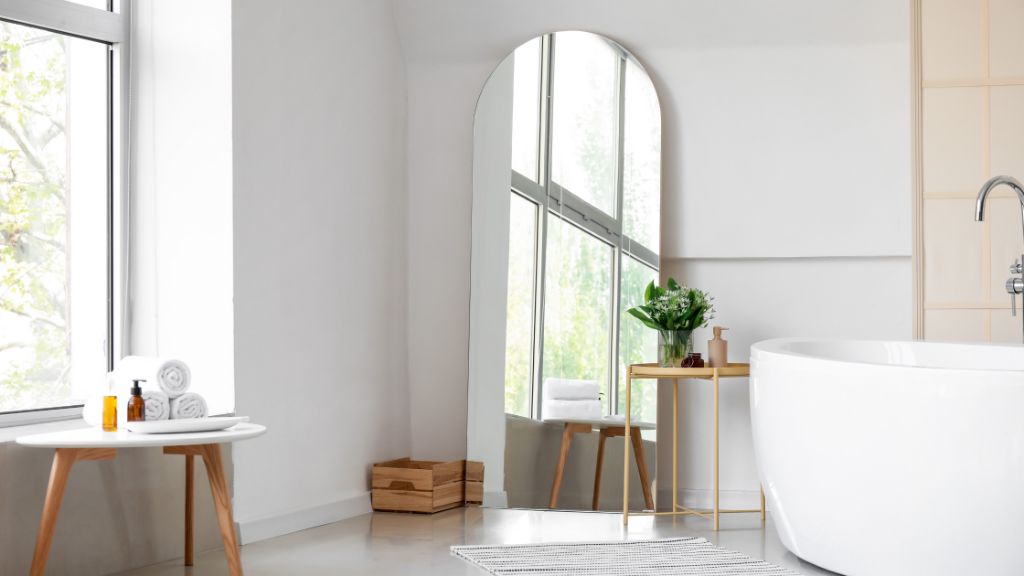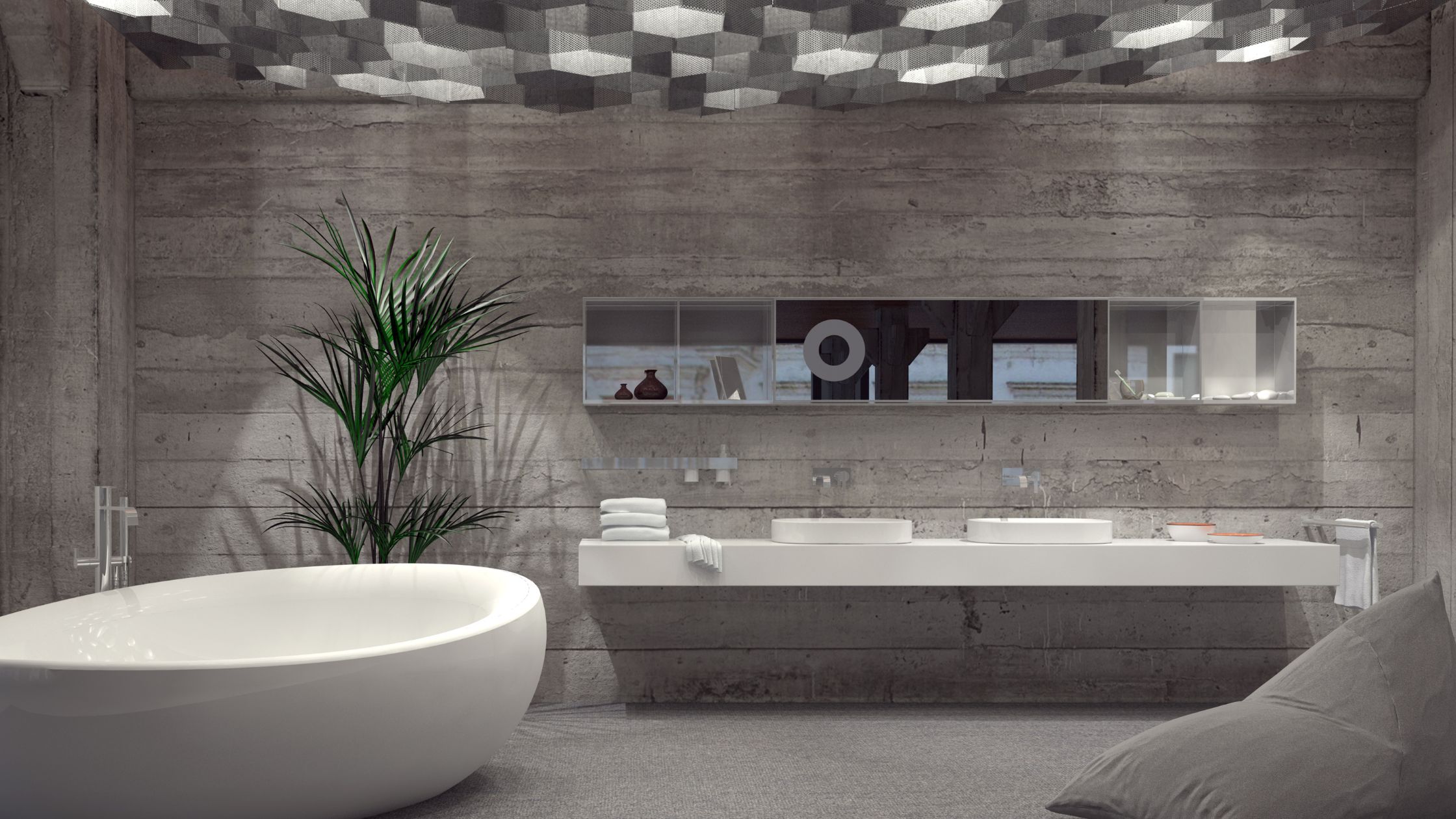Where do you start when choosing your bathroom lighting?
Bathroom lighting can often make or break your bathroom design. Too bright, and you will feel like you are on trial. Too low, and you won’t be able to see to have a shower or do your makeup. Getting your bathroom lighting right is more challenging than you may initially think, but one vitally important thing for anyone to know is that electricity and water don’t mix; that’s why buying bathroom lighting isn’t the most straightforward of experiences. The bathroom is covered by in-depth safety regulations when it comes to electricity, so you’ll need to hire a qualified and experienced bathroom installation team to carry out the job.
When considering bathroom ideas, it’s important to keep in mind that lighting plays a crucial role in the overall ambience of the room. From bright, general light for tasks like shaving to more ambient light for relaxation, there are a number of different applications to consider. This month, we focus on the best bathroom lighting ideas and offer advice on how to get the balance of beauty and practicality just right.
Types of bathroom lighting you need to know
Bathroom lighting has always been viewed as functional, with a general lack of design choices. That is until now… While you can still find simple designs, like flush-fitting bathroom ceiling lights, you are now faced with a greater choice than ever before. Choose between elaborate designs that match your bathroom decor, like decorative bathroom chandeliers, or more contemporary fixtures.
Before choosing your bathroom lighting, you may wish to consider energy-efficient options to help save money on your rising energy bills. Most modern lights are now built with LED lighting compatibility, but to save extra energy, we recommend turning off your lights as soon as you leave the bathroom to reduce your energy consumption.
Perfect bathroom lighting choices
- Ceiling lights
- Downlighters or spotlights
- Wall lighting
- Cabinet or vanity lighting
Looking to create a glamorous bathroom? Install a beautiful chandelier that creates a luxury space. Consider downlights for a more modern twist on bathroom lighting. These lights are flush with the ceiling and provide even illumination across the room. They may take more time to install than a single light, but the effect is worth it. You can also angle the beam to highlight specific elements, such as your bathtub or sink.
Wall lighting is perfect if you’re looking to set a more subdued mood. Some wall lights can even be independent of your main lighting, with a pull cord that operates a switch. This way, you can provide extra illumination right where you need it most!
Alongside your bathroom lighting, you will need to consider the bathroom light switch you plan to have installed. A wall switch is not permitted in bathrooms due to the risk of electrocution, so you may wish to opt for a wall switch on an external wall to the bathroom or a pull cord which hangs from the ceiling inside your bathroom. Whichever you choose, we recommend having your switch as close to the bathroom as possible for ease.
Everything you need to know about IP ratings for bathroom lighting
As everyone knows, water and electricity should never mix. This is why bathroom lights are different. They require special attention in production to ensure that splashes, steam, condensation etc can’t ingress and cause faults; or worse – injury. In order to ensure safety, bathroom lights are made to specific ratings. Which can vary depending on the location they are sited within the bathroom. These are called IP Ratings.
The IP rating is a system that allows us to identify the level of protection against water and solid particles that our lighting fixtures have. For example, bathroom lights should be a minimum of IP44 in order to be used safely in bathrooms, en-suites and cloakrooms.
Bathroom zones are a way of determining the likelihood that water could come into contact with the electrics of a light. Zone 0 is an area where special submersible lights are used – for these lights, we recommend speaking to a specialist electrician or swimming pool light supplier. The rest of the bathroom falls under IP44. Zones 1 and 2 are areas where splashes are likely to occur.
This may also interest you:
Frequently Asked Questions | Bathroom Design Service
Are bidets really making a comeback to the UK home?
Everything you need to know about installing shower screens
Protect your bathroom lighting with Aylesbury Bathroom Centre
Bathroom lighting is one of the most overlooked aspects of bathroom design. What most people don’t realize is that bathroom lighting is actually extremely important. In fact, there are a lot of reasons why you should be paying attention to your bathroom lighting.
For example, to achieve the best possible bathroom lighting, it’s important to make sure that it’s the right type of lighting. In other words, you need to make sure that you’re using the right type of light bulb. Another important factor is the placement of your lighting. You need to make sure that you’re placing your bathroom lighting in the right spot. And if you’re not sure where the right spot is, you can always consult a professional.
Aylesbury Bathroom Centre is your local, professional bathroom installation team. We have worked on hundreds of commercial and domestic bathrooms since our humble beginnings, and our expert team are fully qualified and knowledgeable in undertaking the safe installation of your bathroom lighting. Get in touch today to start planning your bathroom installation project with the Aylesbury Bathroom Centre.




